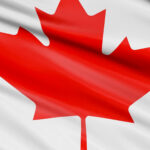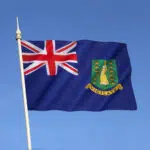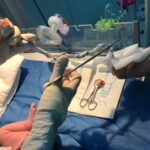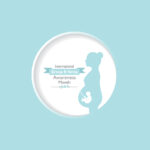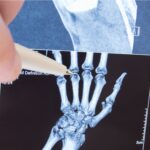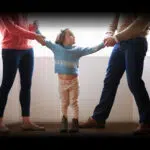National Cleft and Craniofacial Awareness and Prevention Month is observed in July. This is an opportunity to raise awareness and improve understanding of orofacial clefts, clefts of the lip and palate, and other conditions of the head and face. In the United States, approximately 2,600 babies are born with a cleft palate and 4,400 babies are born with a cleft lip, with or without a cleft palate each year. There are other craniofacial birth defects including craniosynostosis (skull sutures fusing prematurely), anotia/microtia (ear is missing or underdeveloped), and anophthalmia/microphthalmia (missing or abnormally small eye).
History of National Cleft and Craniofacial Awareness and Prevention Month
Orofacial clefts and other craniofacial conditions have negative effects on children´s ability to feed and their language development. These children might be at increased risk for a greater number of ear infections, hearing issues, and problems with their teeth. Because of the costs associated with the treatment of orofacial clefts, improving the health of these children is an important public health goal.
There are many centers of diagnosis all over the world that are working to better understand the preventable causes of clefts and craniofacial defects. It is also important to know how these conditions affect children and their families, by focusing on risk factors, health care service use, access to care, quality of life, health outcomes, and management and treatment of these conditions.
To help reduce the chances of having a baby with an orofacial cleft or other craniofacial condition health care providers must encourage patients who are thinking about becoming pregnant to commit to a healthy lifestyle. Among certain healthy habits, we have: control diabetes, quit smoking, exercise regularly, practice yoga, etc. before becoming pregnant. Moreover, health care providers should also work with prospective parents to make informed decisions about medical treatment during pregnancy. This condition can occur in the first three months of pregnancy. Therefore, steps before becoming pregnant are essential for the health of the baby.
National Cleft and Craniofacial Awareness and Prevention Month timeline
For the first time, a cleft lip is closed successfully in China.
Without an anesthetic this operation is extremely painful and difficult, however, the first successful operation takes place this year.
Roux publishes the first satisfactory results in an operation.
This Congress is held in Houston, Texas.
National Cleft and Craniofacial Awareness and Prevention Month FAQs
Are there different types of cleft lip and palate?
Yes, there are. A subtle cleft on one side of the upper lip may appear as a small indentation.
Incomplete unilateral cleft lip, complete unilateral cleft lip, Incomplete bilateral cleft lip, and
Complete bilateral cleft lip.
Is there a vitamin deficiency that causes cleft palate?
The case of deficiency of all B vitamins produces up to 25% cleft palates in the N.M.R.I. strain.
Are cleft lips hereditary?
The causes of cleft lip and cleft palate (or both) are still unknown. However, hereditary (genetic) factors sometimes play a small role.
How to Observe National Cleft and Craniofacial Awareness and Prevention Month
Share information with your friends
You can share many pages on Facebook, Twitter, or via email to raise awareness about these conditions. You must educate your family and friends about cleft lip and palate conditions.
Host a virtual or in-person fundraiser
This can be an opportunity to launch a fundraiser. Many organizations research the topic and need funds to investigate.
Share your story
This month is a great opportunity to learn more about a very treatable condition that affects many children. If you are one of those children, do not miss the opportunity to share your story.
5 Facts About Cleft And Craniofacial That You Probably Do Not Know
The fourth and seventh weeks of pregnancy
If the tissue that makes up the lip does not join completely before birth, a cleft lip happens during the fourth and seventh week of pregnancy.
The roof of the mouth
If the tissue that makes up the roof of the mouth does not join together completely during pregnancy, a cleft palate happens.
Many babies have these conditions
In the United States, about one in every 1,600 babies is born with cleft lip or cleft palate.
Surgery occurs in the first few months
Surgery to repair a cleft lip is recommended within the first 12 months of life.
Most children do well after surgery
With treatment and successful surgery, most children with orofacial clefts do well and lead healthy lives.
Why National Cleft and Craniofacial Awareness and Prevention Month is Important
It is an opportunity for foundations to raise funds
To do research and hire scientists, foundations need funds. Therefore, this month can be considered a great opportunity for you to donate.
It is a month to raise awareness
It is so important to raise awareness about cleft and craniofacial conditions. Parents who want to have a baby will find it very informative to learn about this.
Wear a pink ribbon
By wearing a pink ribbon, people aim to support children born with craniofacial defects. This ribbon is used not only in the United States but also in other countries.
National Cleft and Craniofacial Awareness and Prevention Month dates
| Year | Date | Day |
|---|---|---|
| 2025 | July 1 | Tuesday |
| 2026 | July 1 | Wednesday |
| 2027 | July 1 | Thursday |
| 2028 | July 1 | Saturday |
| 2029 | July 1 | Sunday |







